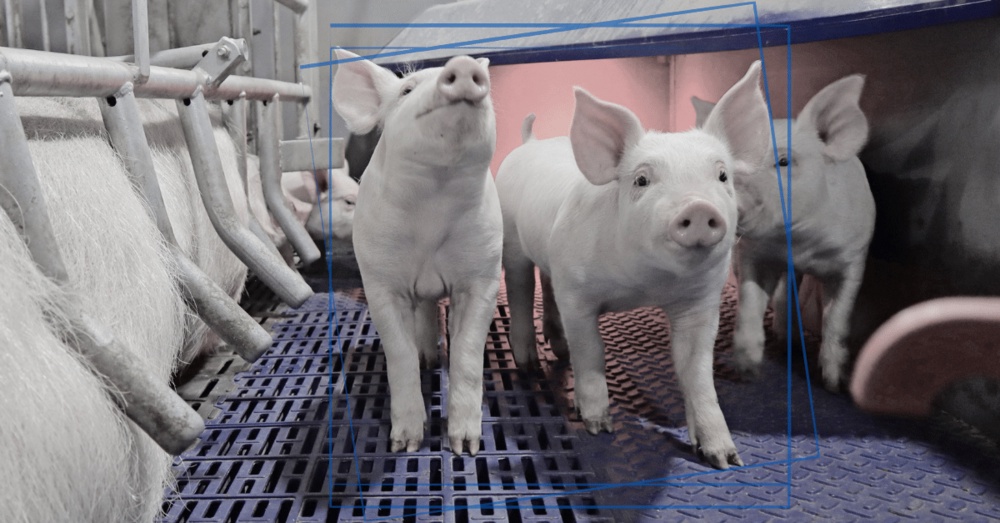PRRS has become one of the most serious diseases that endanger the development of the pig industry, and it has already existed widely in pig herds. The infection rate of PRRS (including antibody-positive and virus-positive) in pig herds in my country is very high, and there are almost no PRRS-negative pig farms.
The sows are recessively infected and continue to carry the virus, which can be excreted for 112 days, and the fetuses are infected through the placenta, and the piglets after birth can carry the virus for up to 86 days. Porcine Reproductive and Respiratory Syndrome Virus (PRRSV) is the main pathogen causing high fever and respiratory syndrome in pigs, causing a large number of pigs to become sick and die.
An overview of PRRS in nursery pigs
The incidence of piglets mostly occurs in pigs aged 5 to 13 weeks, generally starting from 5 weeks to 6 weeks, 8 weeks to 9 weeks is the peak of incidence and death, and then gradually decreases.
Symptoms include elevated body temperature up to 40℃-41℃, difficulty breathing, abdominal breathing, reduced food intake, weight loss, pale skin, rough coat, eyelid edema, and a small number of piglets with purplish ears and body surface skin. The mortality rate of piglets before weaning is 80%-100%, and the mortality rate of piglets after weaning is 20%-50%. If there is multiple infection, the mortality rate is higher.
At present, mixed secondary infection of PRRS, circovirus type 2 and Haemophilus parasuis is more common in clinical practice. At the same time, there are complex mixed infections of swine fever, pseudorabies and swine influenza, which are often followed by Bacterial diseases such as Streptococcus suis, Mycoplasma pneumonia, Infectious Pleuropneumonia, Haemophilus parasuis and Swine Erysipelas complicate the symptoms, increase the difficulty of prevention and control and increase the mortality rate.
Comprehensive prevention and control of PRRS
(1) Adhere to self-propagation and self-support: placental transmission is an important transmission route of the disease, so insisting on self-propagation and self-support and not introducing breeds from epidemic areas and pig farms with a history of this disease is an important preventive measure.
(2) Strict quarantine system: when it is really necessary to introduce, the isolation and quarantine system must be strictly implemented, and blood should be collected and sent to a qualified laboratory for PRRS antibody testing. Antibody-positive pigs must not be introduced, and antibody-negative pigs should also be isolated and observed. .
(3) Vaccination: At present, there are two types of vaccines, inactivated vaccine and attenuated vaccine, mainly attenuated vaccine. The application of the attenuated vaccine must be cautious. If the pig farm has indeed been infected with the disease by serological examination, the attenuated vaccine can be considered to relieve the respiratory symptoms of the piglets and reduce the mortality rate.
The immunization procedure of the attenuated vaccine is: immunize the gilts 2 weeks to 3 weeks before mating to ensure high titer antibody levels to effectively protect against the virus during pregnancy; piglets are 23 days old to 25 days old. The porcine PRRS live vaccine is vaccinated. When it is used as a backup breeding pig, it is vaccinated once again before breeding.
3-5 days before and after vaccination, it is best to add traditional Chinese medicine and vitamins for a few days, so that it is more conducive to the production of vaccine antibodies and improve the titer of the vaccine.
Measures when the disease occurs: Once the pig farm becomes ill, the sick pigs and the healthy pigs should be isolated and raised as soon as possible, the feed grains and the water tank should be strictly separated, and the pigs should not be in contact with each other to prevent infection.
(4) Rational drug care and treatment
Antibiotics such as tilmicosin, enrofloxacin, etc. are used to control respiratory symptoms. In addition, traditional Chinese medicine is used to clear heat and detoxify, improve the overall disease resistance of pigs, and reduce deaths. Furthermore, it is combined with the use of multiple vitamins and amino acids. , to reduce disease stress and promote quicker recovery of the herd.
It should be noted that once the PRRS occurs in the pig herd, the PRRS virus in the sow must be active or semi-active. The key measure at this time is to control the PRRS in the sow herd and improve the overall sow Immunity and health, reduce or eliminate vertical transmission of diseases from sows to piglets.
https://www.arshinepharma.com/info/pigs-are-not-easy-to-raise-after-weaning-it-i-73804894.html


No comments yet